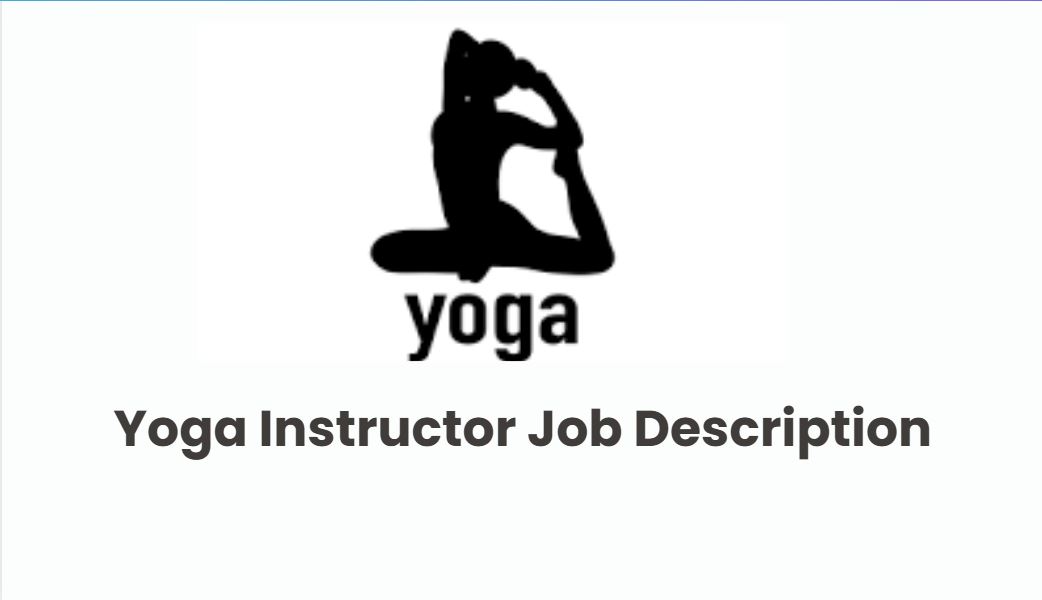Yoga Instructor Job Description: Roles, Skills & Career Path Explained
Yoga has become a global wellness practice, offering benefits that extend far beyond flexibility and strength. At the center of every transformational yoga session is a committed, knowledgeable, and inspiring Yoga Instructor a guide who helps individuals explore the physical, mental, and spiritual dimensions of yoga.
Whether you’re aspiring to become a Yoga Instructor, just got hired into the role, or you’re simply curious about what it truly entails, this article will give you a deep and practical understanding of the position, from responsibilities to certification and career opportunities.
Who Is a Yoga Instructor?
A Yoga Instructor (sometimes called a Yoga Teacher) is a wellness professional trained to teach yoga classes that may include asanas (postures), pranayama (breathing techniques), and meditation. Their goal is to help students improve physical fitness, mental clarity, emotional balance, and overall well-being.
But teaching yoga goes beyond guiding physical movement. A great instructor creates an atmosphere of inclusion, safety, and mindfulness, and helps students at all levels feel welcomed, supported, and empowered on their journey.
Core Responsibilities of a Yoga Instructor
The daily responsibilities of a Yoga Instructor may differ based on the setting — whether it’s a studio, gym, school, online platform, or private instruction — but the following duties are typically part of the role:
1. Class Instruction
-
Lead scheduled group or private yoga sessions
-
Design sequences and lesson plans suitable for different experience levels
-
Demonstrate proper alignment and breathing techniques
-
Guide warm-ups, peak poses, cool-downs, and relaxation/meditation practices
2. Student Engagement and Support
-
Greet new and returning students warmly and build rapport
-
Offer modifications and props to accommodate all abilities and body types
-
Create a non-judgmental space that encourages progress without pressure
-
Be attentive to student feedback, physical cues, and emotional energy
3. Studio and Community Involvement
-
Assist in studio cleanliness, organization, and ambiance (lighting, scent, music, etc.)
-
Collaborate with other instructors or staff for special events, workshops, or themed classes
-
Track student attendance and progress when appropriate
-
Occasionally help with promotions, social media, or blog posts to support the studio
4. Continued Learning
-
Attend teacher trainings, retreats, or workshops for professional growth
-
Stay informed about yoga philosophy, anatomy, and industry trends
-
Share teachings from traditional yogic texts (like the Yoga Sutras) when relevant
Qualifications and Certifications Required
While yoga is an ancient practice rooted in thousands of years of tradition, modern instructors are expected to have professional training and credentials to ensure safety and quality.
Here’s what most employers or studios expect:
-
200-Hour Yoga Teacher Training Certification (YTT 200) from a recognized institution (Yoga Alliance accredited programs are widely accepted)
-
Additional certification for advanced or specialized styles (e.g., YTT 300, YTT 500) is a plus
-
Valid CPR/First Aid certification (especially when teaching in gyms or wellness centers)
-
Experience teaching group classes, either in-person or virtually
Essential Skills and Personal Traits
Being a Yoga Instructor requires more than technical know-how. It’s about presence, empathy, and the ability to guide people through transformative experiences.
Top Skills:
-
Strong knowledge of yoga postures, sequencing, and safe alignment
-
Understanding of breathwork (pranayama) and meditation techniques
-
Ability to manage different experience levels in a single class
-
Good verbal communication and the ability to give clear, motivating cues
-
A calm, patient, and grounded demeanor especially when working with beginners
-
Cultural sensitivity and inclusivity
Bonus or Specialized Qualifications
Depending on your audience or studio focus, the following can enhance your opportunities:
-
Certification in specialized yoga styles, such as:
-
Vinyasa
-
Hatha
-
Yin or Restorative Yoga
-
Prenatal or Postnatal Yoga
-
Kundalini
-
Chair Yoga or Kids Yoga
-
-
Experience in massage therapy, mindfulness coaching, nutrition, or holistic wellness
-
Teaching experience in schools, rehabilitation centers, or corporate offices
-
Ability to teach in multiple languages (bilingual instructors are often in demand)
Where Yoga Instructors Work
Yoga Instructors may teach in a variety of settings depending on their background, goals, and certifications:
-
Yoga studios and wellness centers
-
Fitness gyms and community centers
-
Retreats and spas
-
Schools, universities, or hospitals
-
Corporate wellness programs
-
Online platforms (Zoom, YouTube, virtual class apps)
-
Private homes or personal one-on-one sessions
Some instructors also combine in-person and online teaching, especially post-pandemic.
Who Should Consider Becoming a Yoga Instructor?
This role is ideal for people who:
-
Are passionate about physical health and mental well-being
-
Enjoy connecting with others in a meaningful way
-
Want a flexible job with opportunities for both freelance and full-time work
-
Appreciate the deeper philosophical roots of yoga
-
Have a calm, balanced presence and a desire to help others grow
Career Growth and Opportunities
Yoga teaching can evolve in many exciting directions. As your experience and following grow, you might:
-
Offer workshops, masterclasses, or retreats
-
Become a teacher trainer (certifying new instructors)
-
Specialize in yoga therapy for clinical populations
-
Launch your own studio or online brand
-
Write, podcast, or create content on yoga philosophy or lifestyle
The beauty of this path is its flexibility. You can shape your teaching style, schedule, and niche to reflect your personality and purpose.
Final Thoughts
Being a Yoga Instructor is about more than guiding physical poses. It’s about creating safe spaces, building community, and helping others reconnect with their bodies, minds, and spirits.
Whether you’re teaching a full class in a sunny studio, guiding a student through a Zoom session, or helping someone discover stillness for the first time, your impact is real.
It’s a career rooted in service, discipline, creativity, and heart — and for many, it becomes more than a job. It becomes a way of life.




